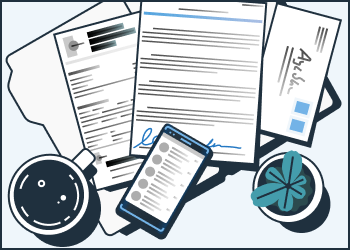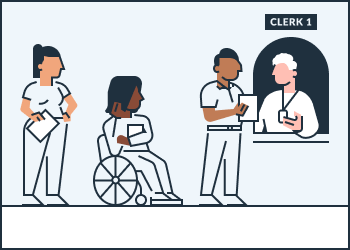Ask for a Fee Waiver if you can't afford filing fees
In most cases, you have to pay a fee to file papers with the court. If you can’t afford the filing fee, you can ask the court for a “fee waiver” in order to file for free. With a fee waiver, you also may not have to pay for certified copies, sheriff's service of process fees, or other costs related to starting a case, such as the cost for a court reporter to be at your trial.
Keep in mind that the fee waiver won't cover a copy of the court reporter's transcript. If you need a transcript, that cost is owed directly to the reporter and not the court. But you may be able to get help from the Transcript Reimbursement Fund.
The information you put on your application (the fee waiver request form) is confidential.
When to ask for a fee waiver
Typically, you ask for a fee waiver when you first file papers and have to pay your first filing fee. You can also ask for a fee waiver if you can't afford fees later in your case.
Fee waivers expire 60 days after your case is finished (judgment entered, dismissal, or final decision by judge). They can also end if the court finds you no longer qualify for the fee waiver. Read more about the fee waivers on Form FW-001-INFO.
You qualify for a fee waiver if:
-
You receive public benefits
For example, you qualify if you receive unemployment, Medi-Cal, Food Stamps (Cal Fresh), WIC, Cal-Works, General Assistance, SSI, SSP Tribal TANF, IHHS, or CAPI. You will need to list which benefit you receive to qualify this way.
-
Your household income, before taxes, is below a set amount
The set amount is listed on Form FW-001 in item 5b. You will need to give the court information about your household income to qualify this way.
-
You can't meet your household's basic needs and pay the filing fees
You will need to give the court information about your income and expenses to qualify this way.
How to ask for a Fee Waiver
-
Gather the information you need

Look at Form FW-001-INFO. You may also need information about your income and expenses to fill out the fee waiver form.
If you receive public benefits, you only need to check which benefit you receive on the form. You don't need to fill out the part about your income or expenses.
If your household income is below a set amount, you will need to fill out information about your household income. You might need to look at copies of paystubs or other documents with your income, to fill out the forms.
If you can't afford the fee and your household's basic needs, you will need to fill out information about your income and expenses. You might need to look at things like paystubs, bills, and bank statements, to fill out the forms.
-
Fill out forms
Fill out the Request to Waive Court Fees (form FW-001). This is a confidential form that only the court will see.
On item 5, check a, b, or c depending on why you qualify.
- If you checked a (you qualify because you receive public benefits), you do not need to complete Page 2.
- If you checked b (you qualify because of your household income), you must answer the items on Page 2 about your household income (items 7, 8, and 9).
- If you checked c (you qualify because you can't afford the fee), you must fill out all of Page 2.
Sign your request for a fee waiver under penalty of perjury. This means you promise the court that you are telling the truth and that you understand you can be punished for lying.
Also, fill out item 1 in Order on Court Fee Waiver (form FW-003).
-
Make copies
Make a copy of your completed Form FW-001. You'll have 2 total, including the original. You don't need to copy Form FW-003.
-
File your Request for Fee Waiver

Take your original and copy of your fee waiver forms to the court clerk. You can do this at the same time you file your other court papers.
The clerk will tell you how long it will take to process your request for fee waiver. The clerk or judge will use the Form FW-003 to write their decision.
Yes, you can file by mail. Mail the originals and to the clerk. You need to include a self-addressed stamped envelope so the clerk can mail your copies back to you. Make sure to include enough postage. If you do not include a self-addressed stamped envelope you will have to go to the courthouse to pick up your copies.
Some courts allow online filing. You can find out if your court has online filing by visiting your court’s website.
Once you've filed the Request for Fee Waiver, you can wait for the court's decision.
After you ask for your fee waiver
If the court granted your request
Your court papers are now fully filed. Your next step will likely be serving the papers to the other party in your case. If your income goes up after you get a fee waiver, you have to tell the court using form FW-010. The court may end your fee waiver if you no longer qualify.
-
Go back to your steps
Return to the step-by-step instructions for your case
-
Go back to Home
Start again at the Self Help Guide to the California Courts
If the court didn't grant your request
In most cases, you'll need to pay the fee to start your case. But depending on why the request was denied, you may still have options to show the court more information if you act quickly.
-
If your fee waiver wasn't granted
Find out how to read the court order and what to do next.

